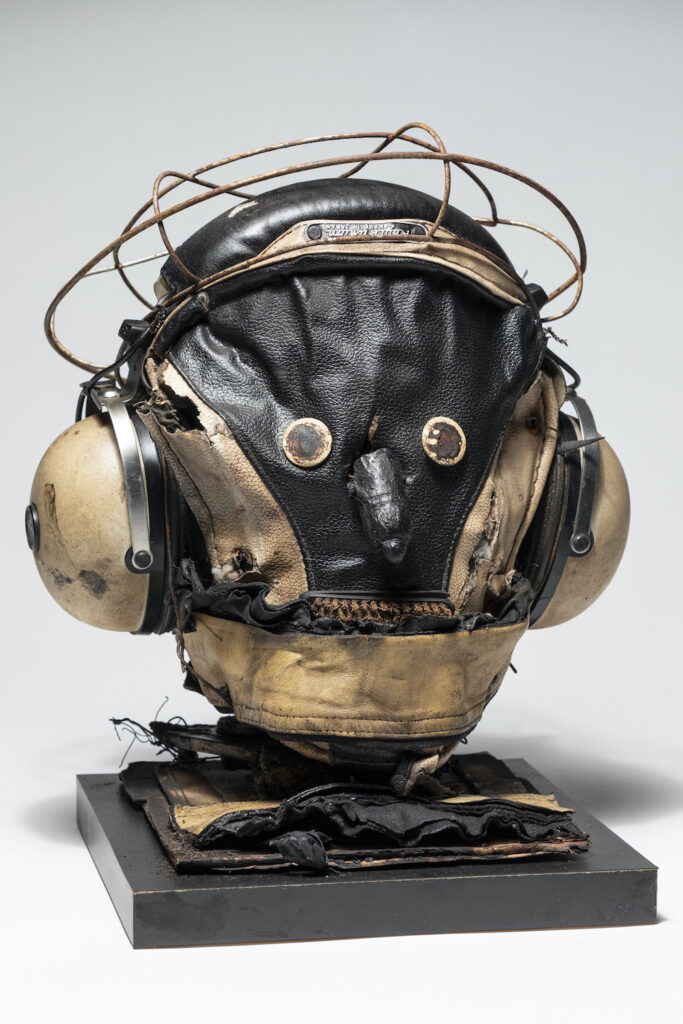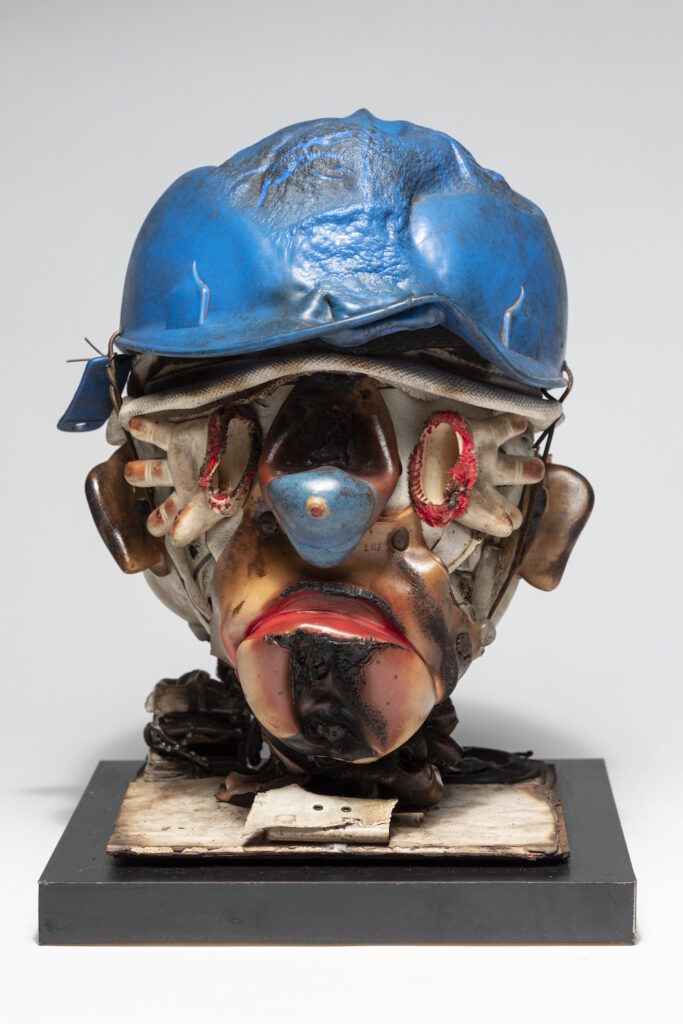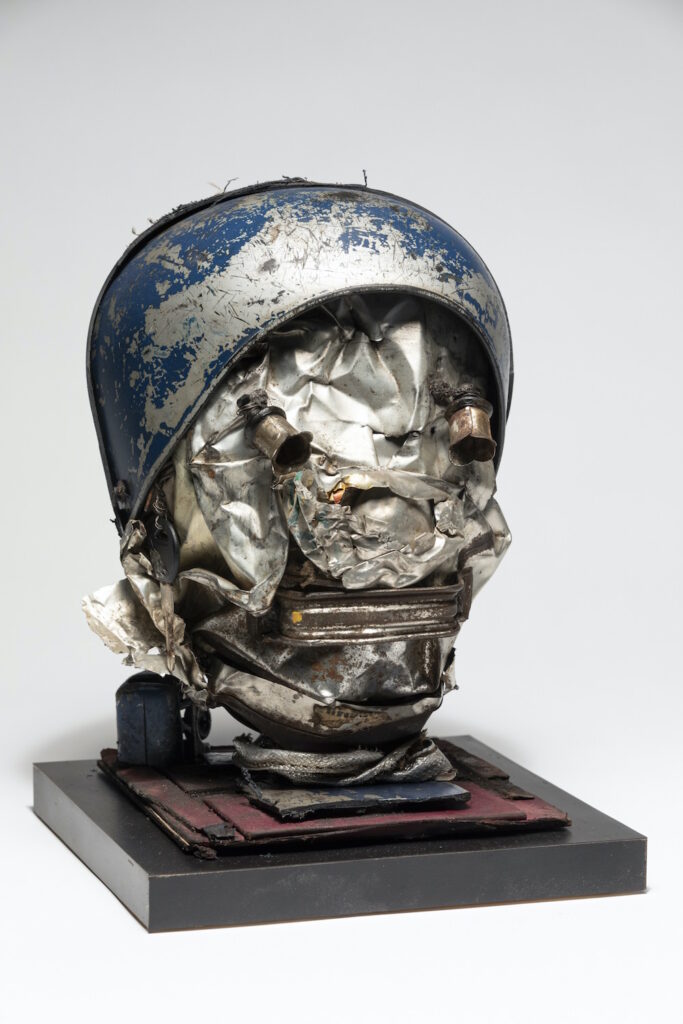
Head #1 (2023) turns leather, fabric, and steel into a head. Fabric and leather (though leather is less so) are quite fragile and could represent the human self. However, another interpretation could be that leather, a by-product of cow skin, is an aged and dead flesh on the head. The industrial materials, for example, the earmuffs and the metallic wires that encircle the head- of which these objects seem aged turn the head into an object of disuse or its inevitable abandonment.
The leather seems to have been manipulated to add wrinkles to the head, while the hollowed eyes allow the viewer to see the history of the materials that make the head. There seems to be some form of burn marks on the material, which suggests erosion, which may show that the head has been made despite the damage, implying survival.

Head #2 (2023) continues the artistic transformation of old and discarded materials into heads. Unlike the previous head- this one is much more vibrant, though it does keep the more distressed features, such as the slight burns and wrinkles. These features show the state of the head as life from death- a new creation from the discarded material that has been destroyed, damaged or in a state of disrepair. Yet, the artwork is a beautiful work despite the death of the material.
The blue helmet that adorns the head is a shield against falling objects. Yet, the hat is scuffed and damaged, which may no longer provide this protection. The face of the head seems both organic and synthetic, while it seems incredibly decayed due to the burn marks and dirt. The facial figures of the face resemble a distorted human face, which seems slightly uncanny. The eyes are open sideways, and the mouth of the assemblage is distorted.
As with the previous work, Head #1, number two explores the resilience of the object and, as a metaphor, humanity in the context of destruction. Therefore, this has invited the viewer to reflect on mortality and their relationships with objects and memories.

Head #3 (2023) seems much more fragile and tense than the previous two heads in the series. It is wearing an extremely weathered blue metallic helmet which has peeling paint and dents. This suggests that it has had a history of wear, while the helmet could be a metaphor for defending against this very fragility that the helmet has become. Moving onto the face- the metal seems to be crushed (which could represent the wrinkles on the face), and the eyes of the piece seem to be from a cylindrical metal object. The ‘eyes’ are gouging out from the face, creating a gaze from the head as though it is watching the viewer.
The mouth of this head seems twisted and torn, which gives it a mechanical feel. The rest of the metal on the face has a slight rust, making it appear slightly aged. The use of metal in this head creates a slightly violent feel, yet it could be construed as a form of survival, as the metal is repurposed, thus giving it new life.
Together, the three heads shown in the publication greatly explore existentialism. It has successfully transformed decayed and discarded material into beautiful yet unnerving assemblages. Thus, it invites the viewer to understand the beauty behind the abandoned and refuse, which implies to the viewer that both creation and destruction are connected. Therefore, the series has shown that there are complexities to existence that should be embraced by the viewer.
